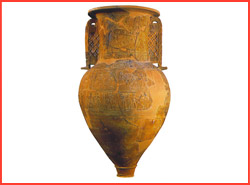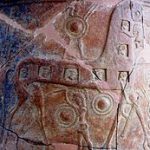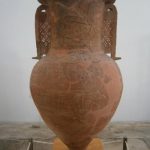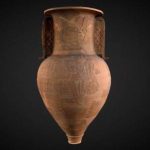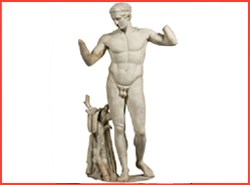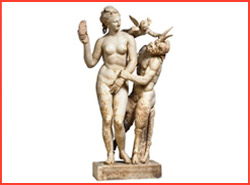More than 5 decades ago, during a dig for a well, just off today’s retail center of Matoyianni Street, an ancient urn dating to 700 BC was discovered. The urn, or Pithos as it is known in Greek, was a burial vase that contained bones and on its outer surface, in relief was a scene by scene portrayal of the Capture of Troy. Images depicting the descent of the Greeks from THE Trojan Horse, warriors attacking women and children—dramatic scenes that inspired the works of Euripides’ The Trojan Women and Homer’s Iliad.
The urn, that links the tale of The Trojan War, and unites Mykonos with the ancient legend of the Trojan War. The Mykonian Pithos is the most important artifact, currently housed in the island’s Archaeological Museum. Currently, the museum is showcasing the urn, surrounded by the “Vanity” campaign, featuring human adornment, dating back to 7000 BC.
• Large relief pithos decorated with scenes from the Capture of Troy. It had been used as a burial pithos and was discovered in the summer of 1961, during the digging of a well, in the centre of the town of Mykonos. The descent of the Greeks from the Wooden Horse is depicted on the neck, and the body is covered with panels showing warriors attacking women and children. Height 1,40 m. Dated to the 7th century BC.
THE PITHOS OF MYKONOS
The frame of the Trojan fall is depicted on a pithos. The Trojan Horse, the Achaean warriors, the dissolution of the Troy’s children and the rape of women.
All the dramatic scenes that inspired the writing of the ancient Greek tragedies, such as the “Troads” of Euripides (415 BC), are recorded as a cinematic film in the relief decoration of “Mykonos Pithos”. A vessel of 670 BC, found accidentally in the summer of 1961 in the well of a Mykonian house.
This great find, which is basically a burial pithos with relief decoration and human bones inside, was one of the most important exhibits of the (today closed) Archaeological Museum of Mykonos.


